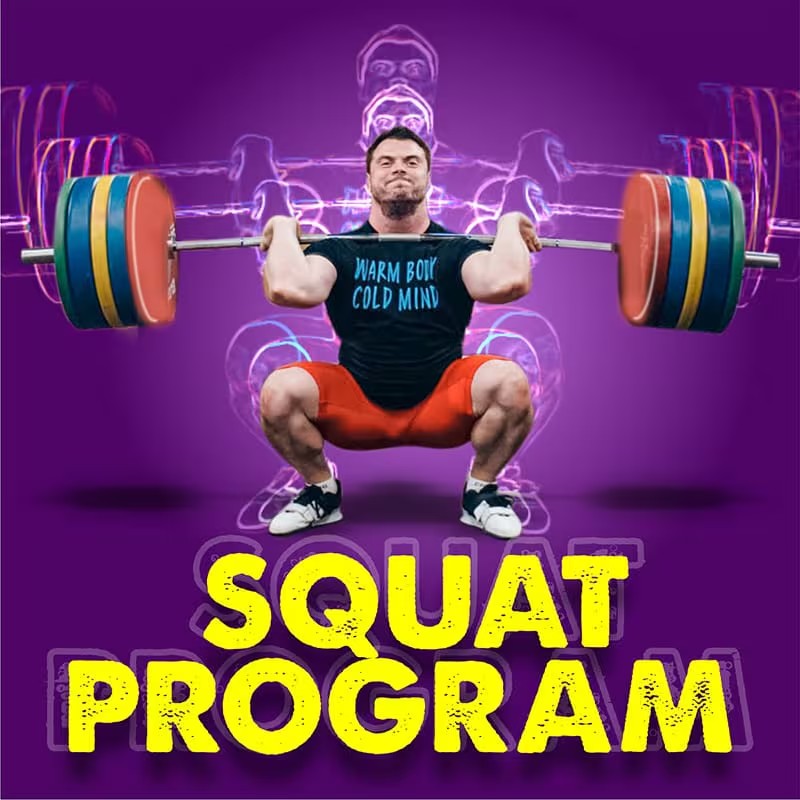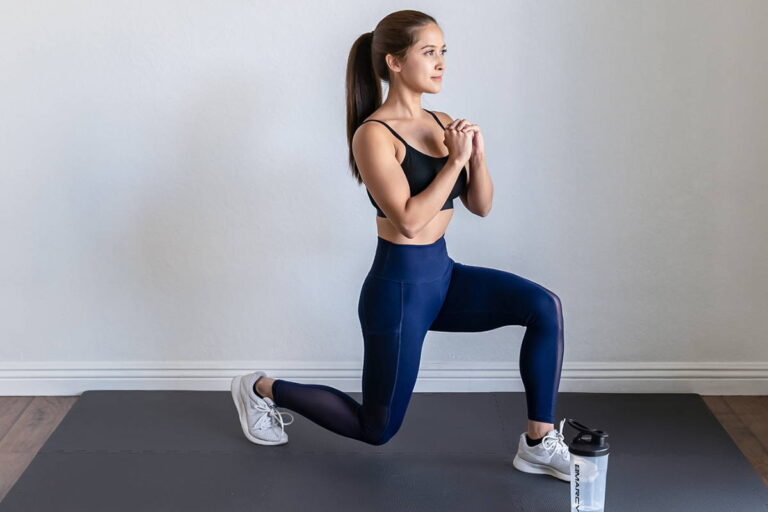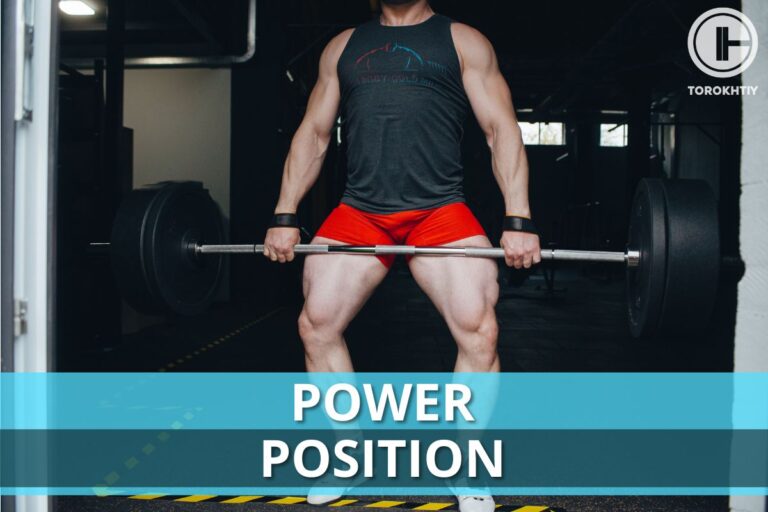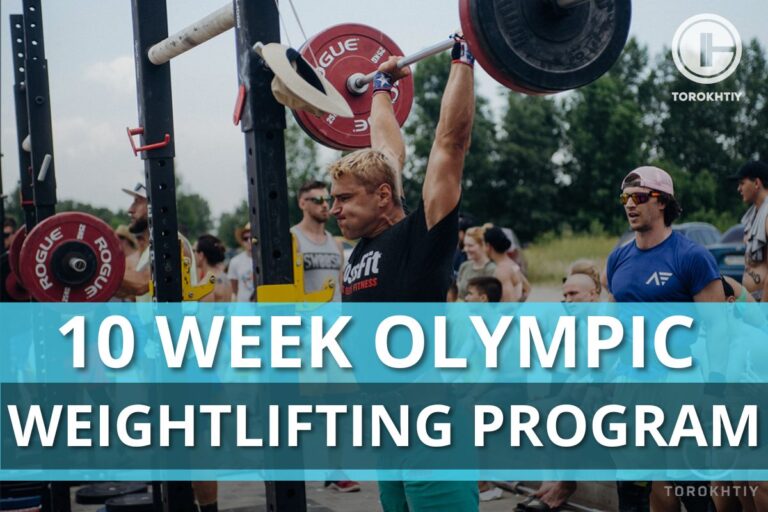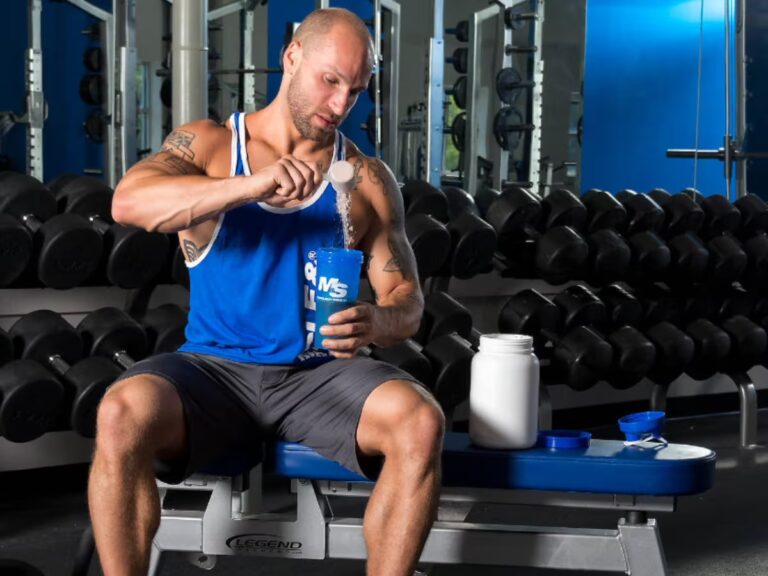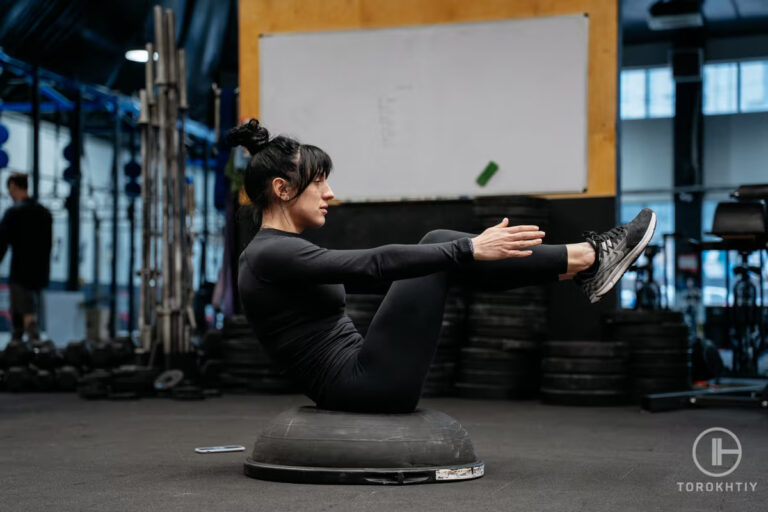4 week squat program
Unlocking the true potential of your squat requires dedication, technique, and a strategic plan. This 4-week program is meticulously designed to escalate your squat power, emphasizing varying exercises and load types. Full and extended version of this training plan, you can find – HERE
By alternating between strength, power, and technique drills, this program guarantees to invigorate your squat game.
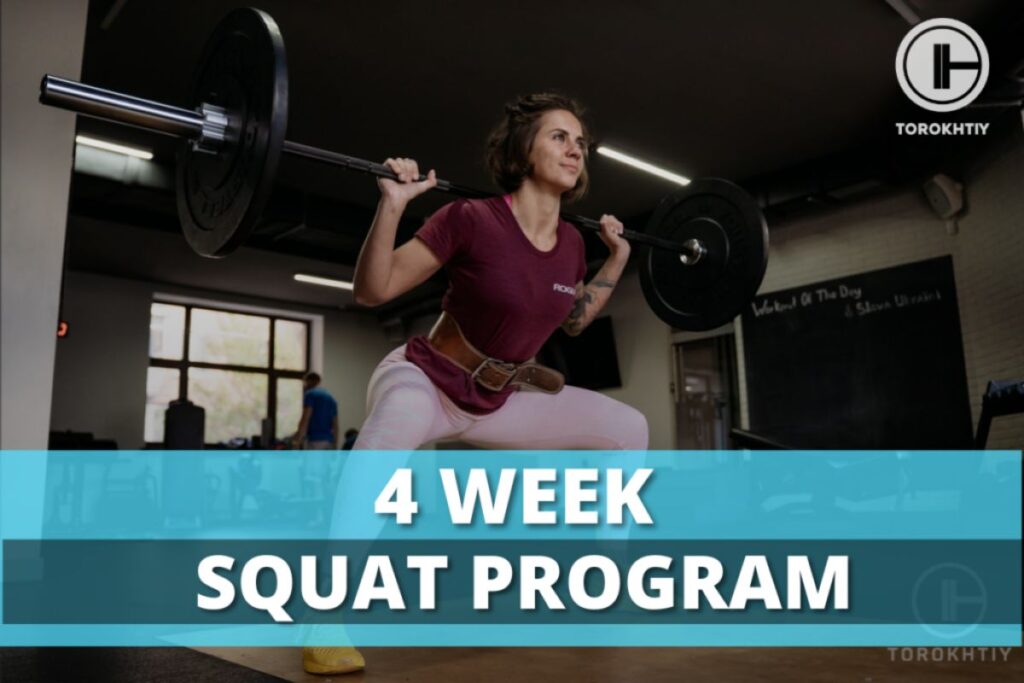
How to read Olympic weightlifting training plan load
In Olympic weightlifting and strength training there is a standard form of writing planned load. Coach give a prescribtion that athletes need to do on the each training in specific way.
Let`s talke a look on certain example:
It means that in this specific exercise – Back Squat, athlete will do for
1 set for 4 reps on 50%, 3 sets for 4 reps on 65%, 1 set for 4 reps on 75%,
% – counts from actual 1 RM, means that if your current 1 RM 100 kg (220 lbs), athlete work 1 set for 4 reps on 50% – 50 kg (110 lbs), 3 sets for 4 reps on 65% – 65 kg (143 lbs), 1 set for 4 reps on 75% – 75 kg (165 lbs)
1-Week Example
Day 1
Bulgarian Split Squats: 4×8 each leg
Strengthens quads, glutes, and offers stability training.
Single-Leg Deadlifts: 3×10 each leg
Targets hamstrings and glutes, while enhancing balance.
Leg Press: 4×12
Intensive focus on the quads, glutes, and hamstrings.
Long JUMP: 4×6
🔻12 Week Squat Program by Oleksiy Torokhtiy
Do you want to double your squat strength? In just 12 weeks, you’ll be able to boost your squat results.
This program transforms any ordinary squat into a powerful athletic movement.
What’s included:
- 12 weeks of squat programming;
- Effective combination of sets, reps, and weights;
- Fully designed and coached by Oleksiy Torokhtiy;
- Over 60+ movements, banded work, and weight training;
- Accessory work for core, joint stability and injury prevention;
- Max out on back squat and front squat at the end.
Start now and boost your squat results!
Day 2
Jumping Squats: 5×5
Develop explosiveness and power in quads and glutes.
Pause Squats: 4×6 with a 3-second pause at the bottom
Improve squat depth and strengthen the “sticking point”.
Deficit Middle Grip PULL: 3×8
Strengthening posterior chain
Walking Lunges: 3×20 steps
A dynamic movement targeting quads, hamstrings, and glutes.
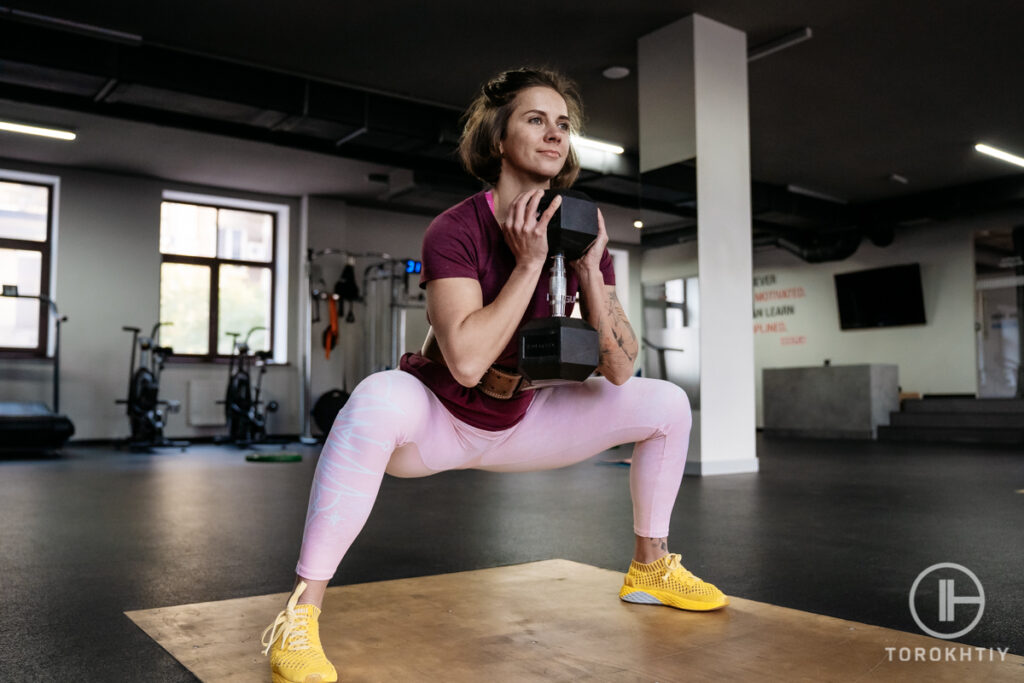
Day 3
Goblet Squats: 4×15
Enhance squat technique and depth while working on quad strength.
Bench Back SQUAT: 5×6
Intensive focus on the leg and back muscles.
Box Step-Ups: 3×12 each leg
Focuses on unilateral leg strength and stability.
Lateral Lunges: 3×10 each side
Lateral movement to target inner and outer thighs.
Day 4 – Recovery Training
Yoga/Pilates Session: 45-60 minutes
Enhances flexibility, core strength, and aids muscle recovery.
Foam Rolling: 15-20 minutes.
Self-myofascial release to reduce muscle soreness.
Further Programming Recommendations:
1. Load Adjustments
For weeks 2 and 3, aim to increase your load by 5%. By week 4, aim for a 2-3% increment to ensure safety and avoid overtraining.
2. Intensity
As you advance through the weeks, increase your intensity by either adding weight, repetitions, or incorporating resistance bands.
3. Form Check
Always prioritize form. Consider hiring a trainer or using video analysis tools to check your technique.
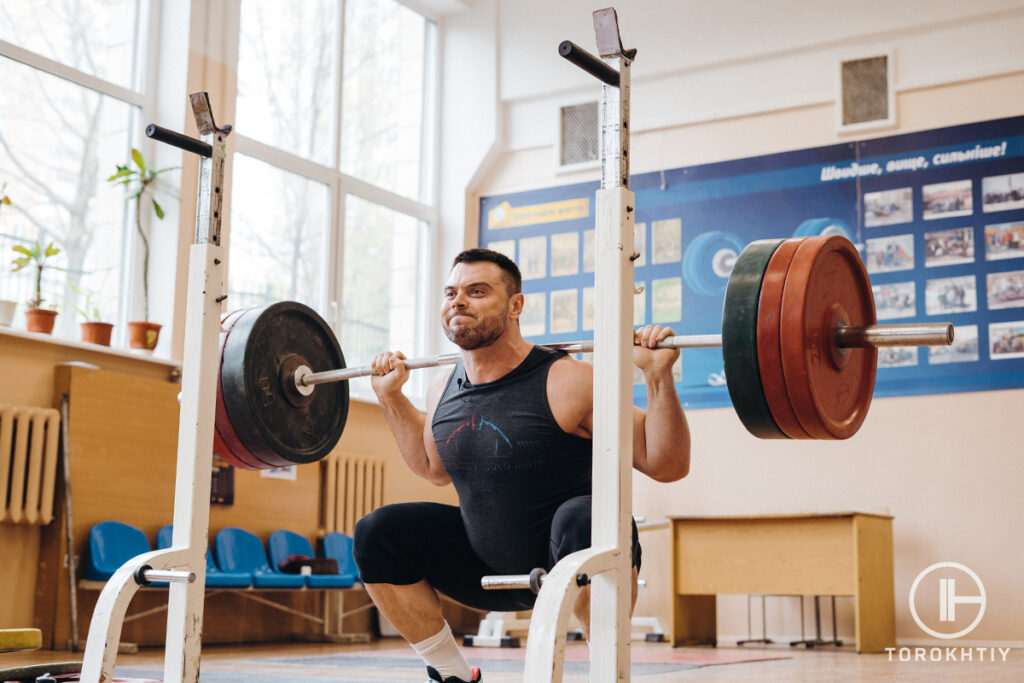
Essential Training Techniques and Exercises
As you progress in your squat program, the integration of advanced training techniques and exercises becomes crucial. These methods not only challenge your muscles in diverse ways but also ensure you continue to make gains without hitting a plateau. Here’s a compilation of vital techniques and exercises to incorporate in the forthcoming weeks:
1. Wave Loading
This involves oscillating the weights in a wave-like pattern. For example, 3 sets where weights increase and then decrease. This can confuse the muscles, spurring growth and strength.
2. Drop Sets
After performing an exercise to failure with a particular weight, reduce the weight immediately and continue until failure again. This enhances muscle endurance and stimulates growth.
3. Pyramidal Training
Start with a lighter weight and higher reps. With each subsequent set, increase the weight and decrease the reps. This method is excellent for muscle strength and hypertrophy.
4. Cluster Sets
Break your sets into smaller mini-sets with short rest intervals in between. For instance, instead of doing 6 reps continuously, you can perform 2 reps, rest for 10 seconds, then repeat. This allows for higher volume with heavier weights.
5. Tempo Training
Alter the speed of your reps to emphasize different phases of the lift. For example, a 4-0-1 tempo means 4 seconds down, no pause, and 1 second up.
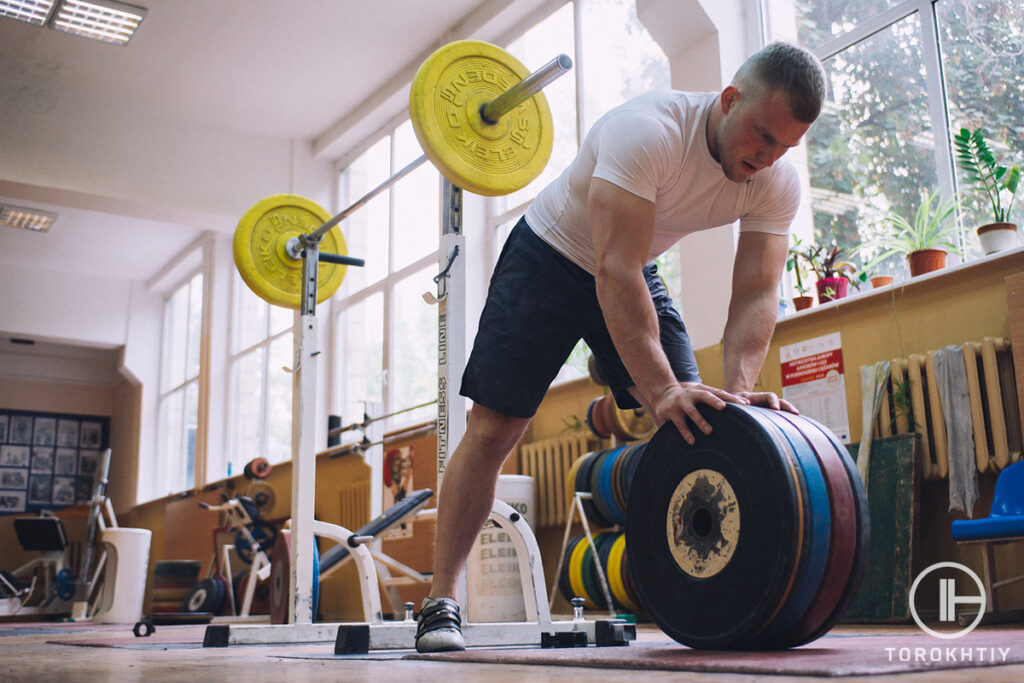
Key Exercises:
1. Zercher Squats
Holding the barbell in the crook of your elbows, this squat variation targets the quads, glutes, and core while also engaging the upper back and arms.
2. Anderson Squats
Starting the squat from the bottom (from safety pins or blocks) emphasizes the concentric phase and helps to power through sticking points.
3. Cossack Squats
A lateral squat movement that deeply engages the inner thighs and promotes hip mobility.
4. Front Foot Elevated Split Squat
Elevating the front foot during a split squat increases the range of motion, placing greater emphasis on the rear leg’s glutes and hamstrings.
5. Box Squat with Bands
Using resistance bands with box squats adds an accommodating resistance, making the top part of the squat harder, thus training explosiveness.
Conclusion
To maximize results, it’s crucial to periodically infuse these techniques and exercises into your regimen. They will not only break the monotony but also push your boundaries, ensuring that you continue to see gains in strength, endurance, and muscle growth.
This 4-week squat program offers a holistic approach to strengthening your squat. Incorporating strength, power, technique, and recovery, it’s meticulously crafted for both newcomers and seasoned lifters. Stay consistent, prioritize form, and with each week, you’ll edge closer to your squat goals.
Also Read:
Why Trust Us?
With over 20 years in Olympic Weightlifting, our team does its best to provide the audience with ultimate support and meet the needs and requirements of advanced athletes and professional lifters, as well as people who strive to open new opportunities and develop their physical capabilities with us.
By trusting the recommendations of our certified experts in coaching, nutrition, dietology, and sports training programming, as well as scientific consultants, and physiotherapists, we provide you with thorough, well-considered, and scientifically proven content. All the information given in the articles concerning workout programming, separate exercises, and athletic performance, in general, is based on verified data. We ensure that you can rely on our professionals’ pieces of advice and recommendations that can be treated as personalized ones which will benefit you and fully meet your needs.
The product testing process is described in more detail here
Author: Sergii Putsov
Head of Sport Science, PhD
Best Results: Snatch – 165 kg,
C&J – 200 kg
Sergii Putsov, Ph.D., is a former professional weightlifter and National team member, achieving multiple medals in the 94 kg weight category at national competitions. With a Master’s degree in “Olympic & Professional Sport Training” and a Sport Science Ph.D. from the International Olympic Academy, Greece, Sergii now leads as the Head of Sport Science. He specializes in designing training programs, writing insightful blog articles, providing live commentary at international weightlifting events, and conducting educational seminars worldwide alongside Olympic weightlifting expert Oleksiy Torokhtiy.

